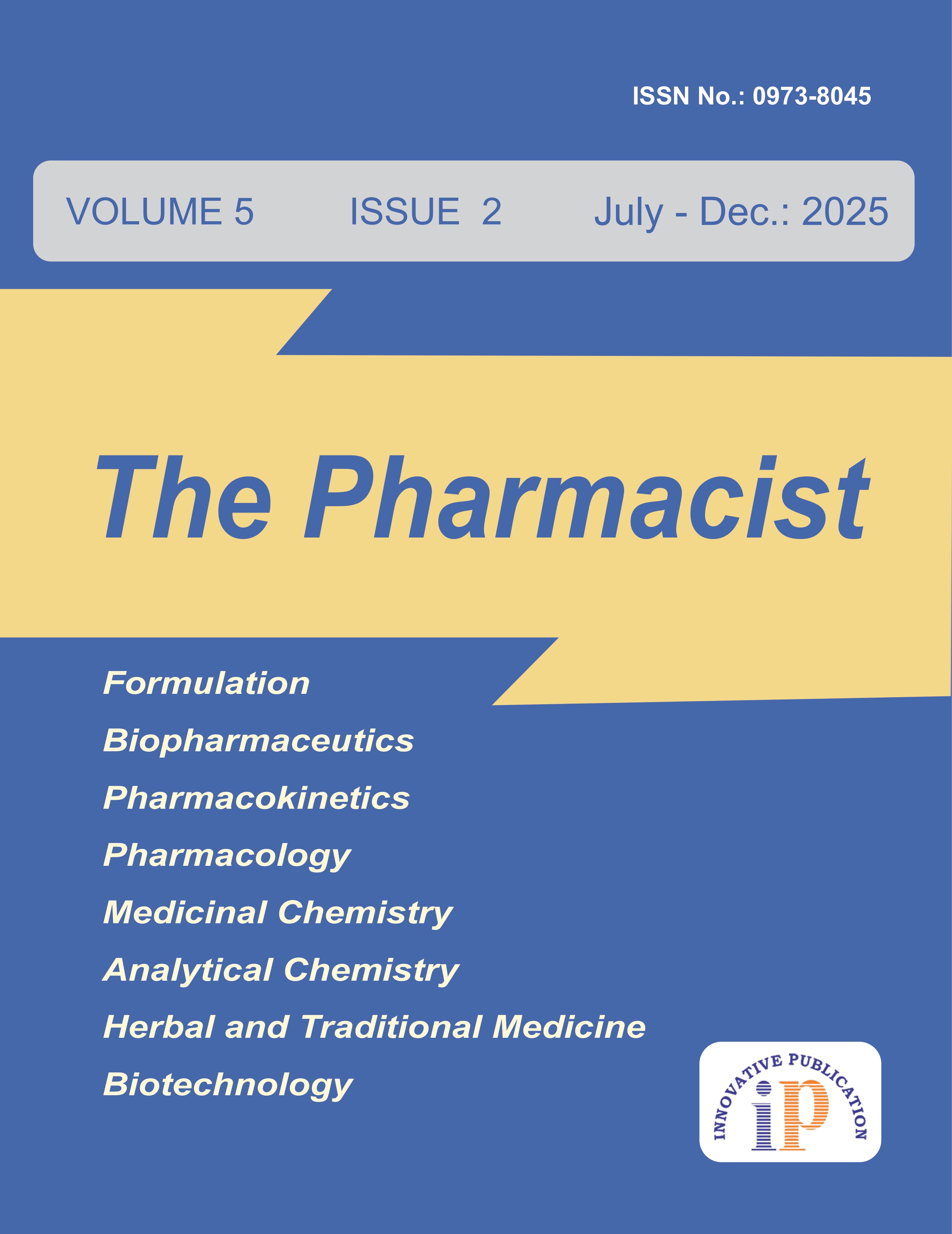The Pharmacist
The Pharmacist (Pharmacist) is an open-access, peer-reviewed pharmacy journal, published half-yearly, as print and online by the The Pharmacist (Pharmacist) since 2025. With the aim of faster and better dissemination of knowledge, we will be publishing articles ‘Ahead of Print’ immediately upon acceptance of manuscript. In addition, the journal allows free access (Open Access) to its contents, which is likely to attract more readers and citations to articles published in journal. Manuscripts should be prepared in accordance w...

Method development and validation of tirzepatide in bulk and pharmaceutical dosage form by using RP-HPLC
Page: 14-20
Background: Tirzepatide is a novel dual glucose-dependent insulinotropic polypeptide (GIP) and glucagon-like peptide-1 (GLP-1) receptor agonist with significant clinical value in type 2 diabetes mellitus management. Analytical methods enabling accurate, robust, and stability-indicating quantification are essential for quality control of bulk and dosage forms.
Aim and Objective: To develop and validate a simple, precise, and stability-indicating reverse-phase high-performance liquid chromatography (RP-HPLC) method for estimation of tirzepatide in bulk drug and pharmaceutical dosage form, in accordance with ICH Q2(R1) guidelines.
Materials and Methods: Chromatographic separation was achieved using an Agilent Eclipse XDB C18 column (150 × 4.6 mm, 3.5 µm) with an isocratic mobile phase of acetonitrile and 0.1% triethylamine buffer (pH 2.5, adjusted with orthophosphoric acid) in the ratio of 30:70 (v/v), at a flow rate of 1.0 mL/min. Detection was carried out at 234 nm with a 10 µL injection volume. Method validation parameters evaluated included specificity, linearity, accuracy, precision, robustness, and sensitivity (LOD/LOQ). Forced degradation studies under acid, alkali, oxidative, reductive, hydrolytic, photolytic, and thermal stress were performed to confirm stability-indicating capability.
Results: Tirzepatide eluted at 2.563 min with sharp and symmetrical peaks (tailing factor 1.15, plate count 10,524). The method showed excellent linearity over 25–150 µg/mL (r² = 0.99979), recoveries within 99.4–101.1% (mean 100.1%), and precision with %RSD < 2. Robustness testing under varied flow rates and mobile-phase ratios confirmed method resilience. Sensitivity studies yielded LOD and LOQ values of 0.60 µg/mL and 2.00 µg/mL, respectively. Forced degradation indicated maximum degradation under oxidative (11.6%) and reductive (12.6%) conditions, while thermal, photolytic, and hydrolytic conditions caused only minor changes; in all cases, peak purity remained intact.
Conclusion: The validated RP-HPLC method is accurate, precise, robust, and stability-indicating. Its short runtime, reproducibility, and simplicity make it highly suitable for routine quality control and stability testing of tirzepatide in pharmaceutical laboratories.
Article Metrics
- Visibility 154 Views
- Downloads 66 Views
- DOI 10.18231/j.pharmacist.14556.1759918868
-
CrossMark
- Citation
- Received Date August 11, 2025
- Accepted Date September 18, 2025
- Publication Date October 08, 2025